Why you can trust Tom's Hardware
Comparison Products
We threw in a little bit of everything to compare LaCie’s Rugged BOSS SSD. At the high-end there's Samsung’s X5 with its Thunderbolt 3 interface. Following it is a group of USB 10 Gbps devices: SanDisk’s Extreme Pro, Samsung’s T7 Touch, Adata’s SE800, and LaCie’s Rugged SSD. And, with SATA as a bottleneck, we also included the SanDisk Extreme and LaCie’s Mobile Drive, a 2TB portable HDD.
Transfer Rates – DiskBench
DiskBench is a storage benchmarking tool that allows us to test the transfer or copy performance of a storage device with real data. We test external drives with three file transfers that consist of 25GB of photos (10GB of jpgs and 15GB of RAW photos), 50GB of movies, and 25GB of documents. First, we transfer each folder from a 1TB NVMe SSD to the external device; then we follow up by reading a 3.7GB 7-zip file and a 15GB movie back from the device.


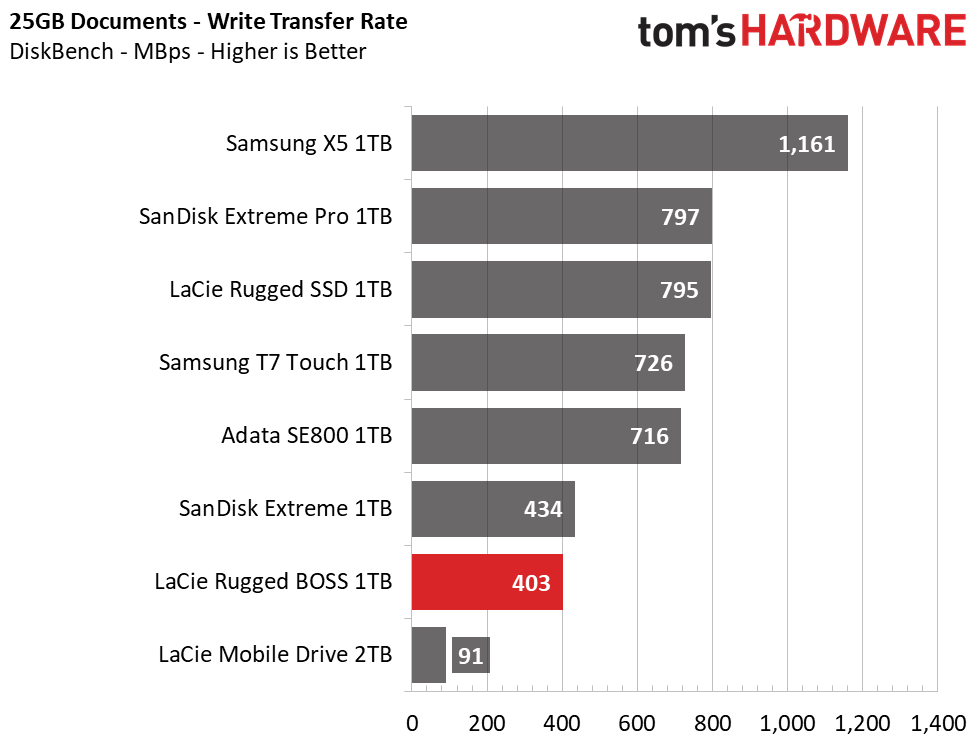
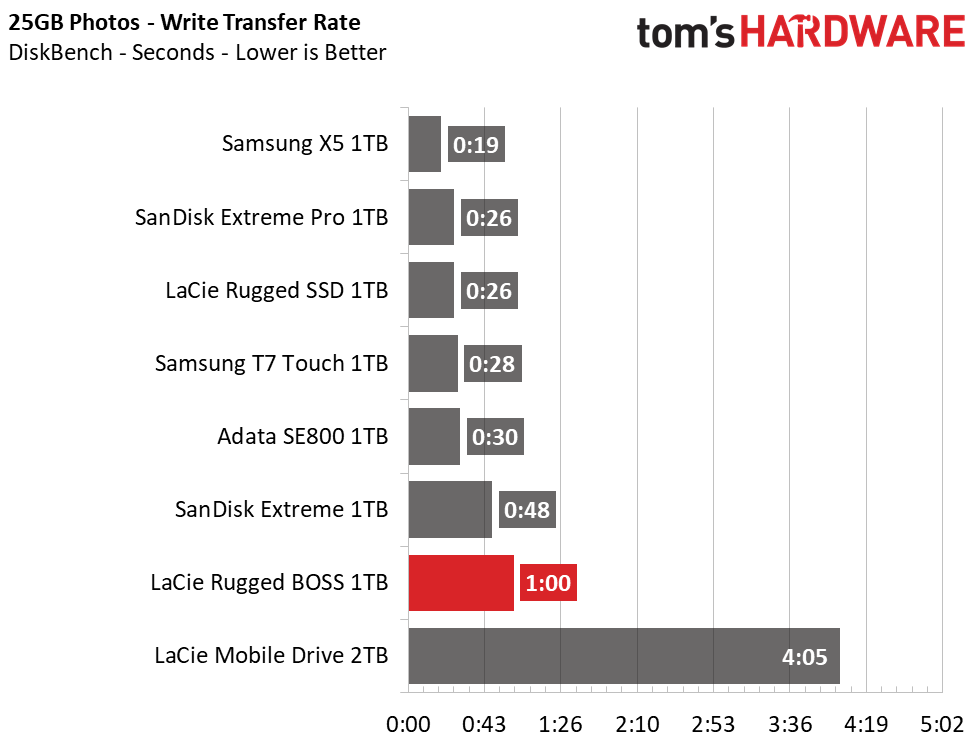


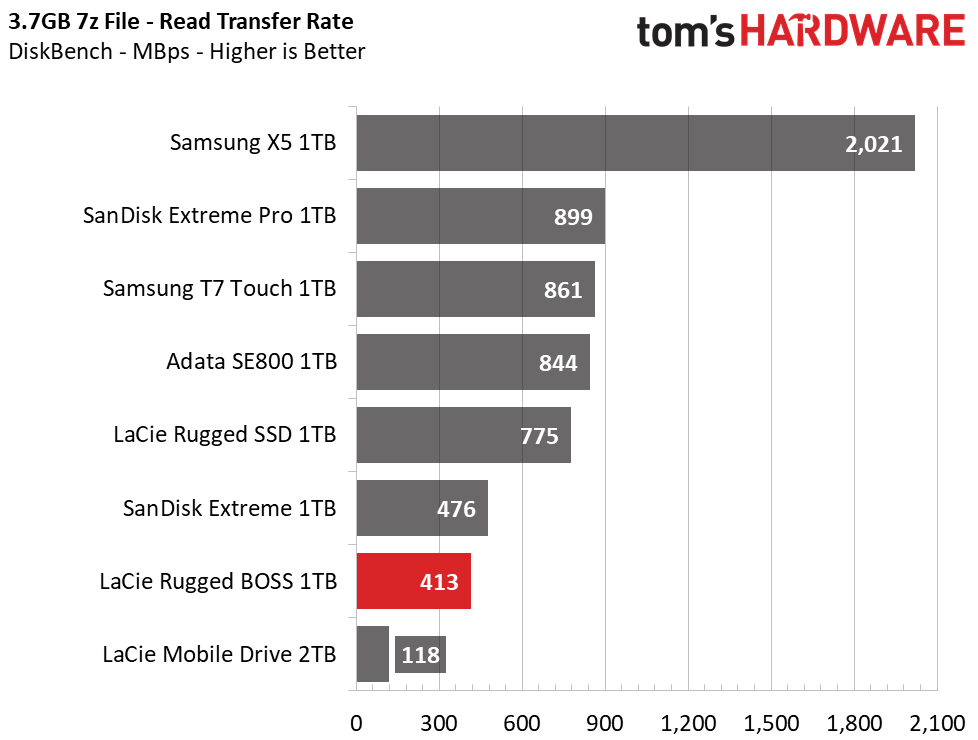


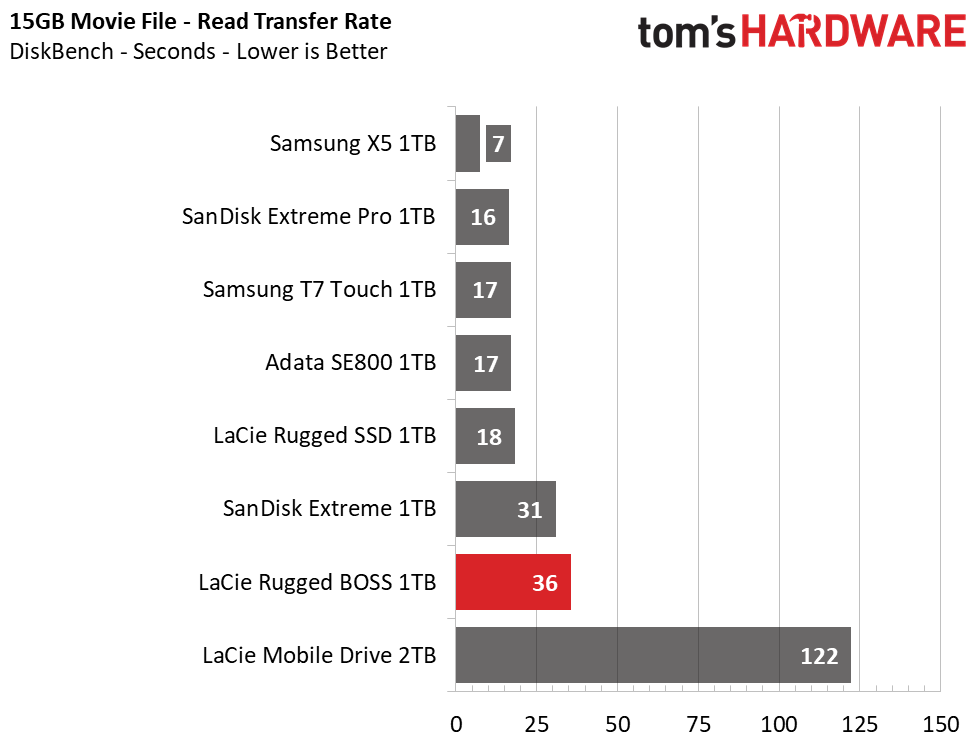
When it comes to our file copy and read tests, the Rugged BOSS SSD comes in second to last in each test here. SanDisk’s Extreme features a faster USB 3.2 Gen 2 interface, which offers it a bit more performance over the LaCie’s somewhat restricted USB 3.2 Gen 1 interface. The 10 Gbps and TB3 devices are over twice as fast on average.
Trace Testing – PCMark 10 Storage Test: Data Drive Benchmark
PCMark 10 is a trace-based benchmark that uses a wide-ranging set of real-world traces from popular applications and common tasks to measure the performance of storage devices. To test drives that store files rather than applications, we utilize the Data Drive Benchmark.
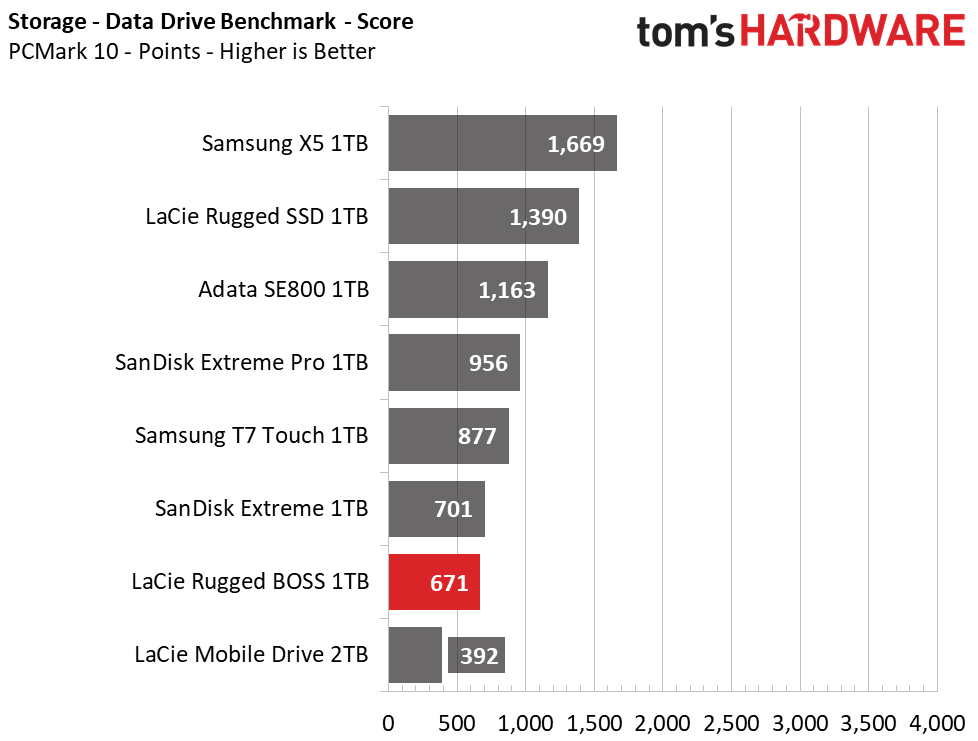

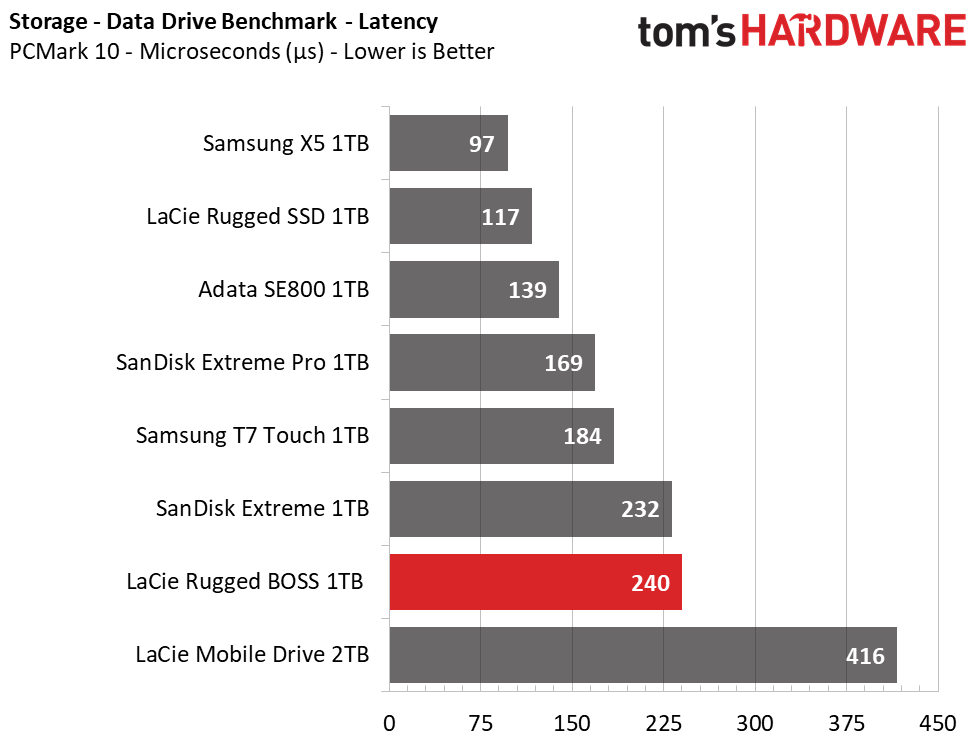
In PCMark 10, LaCie’s Rugged BOSS SSD scores quite similar to the SanDisk Extreme. However, since it is restrained a bit on available bandwidth, the Rugged BOSS SSD falls into second-to-last place once again. Compared to the company’s Mobile Drive, the Rugged BOSS SSD is pretty much twice as responsive. However, the company’s Rugged SSD is much more responsive than it, with a performance that nearly rivals the TB3-powered Samsung X5.
Synthetics - ATTO
ATTO is a simple and free application that SSD vendors commonly use to assign sequential performance specifications to their products. It also gives us insight into how the device handles different file sizes.
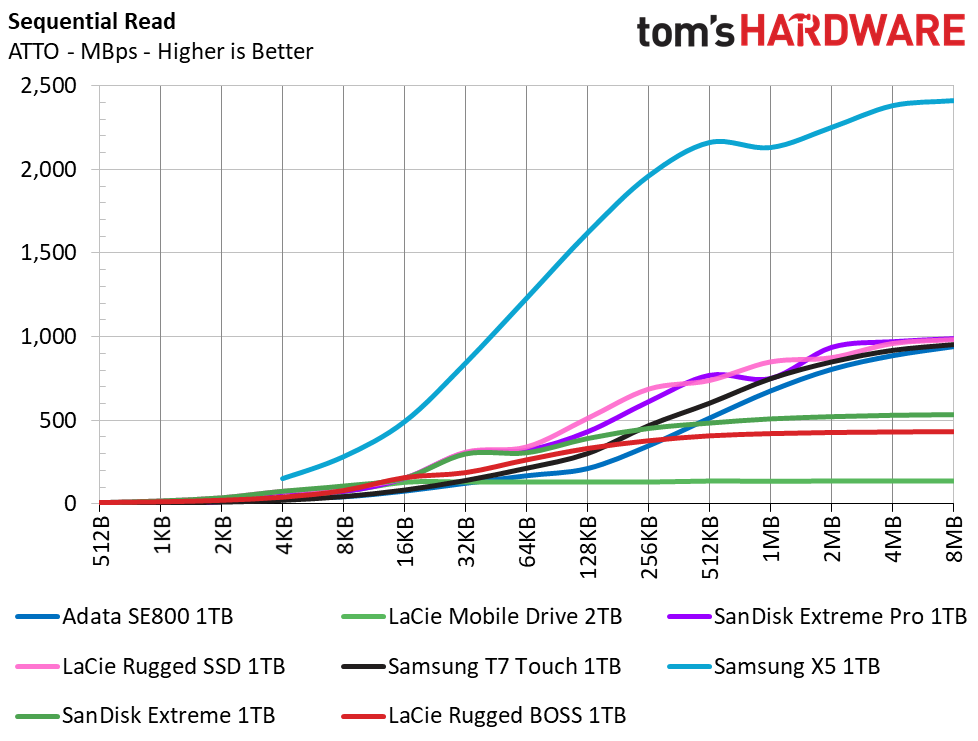

In ATTO, we tested LaCie’s Rugged BOSS SSD at a QD of 1, representing most day to day file access at various block sizes. It peaked at about 430 MBps read/write, while the SanDisk Extreme hit highs of about 530/500 MBps read/write. The 10 Gbps devices, on the other hand, hit upwards of 800-950 MBps and the faster Samsung X5 left them all in the dust with its performance.
Get Tom's Hardware's best news and in-depth reviews, straight to your inbox.
Synthetics - iometer
iometer is an advanced and highly configurable storage benchmarking tool that vendors often use to measure the performance of their devices.
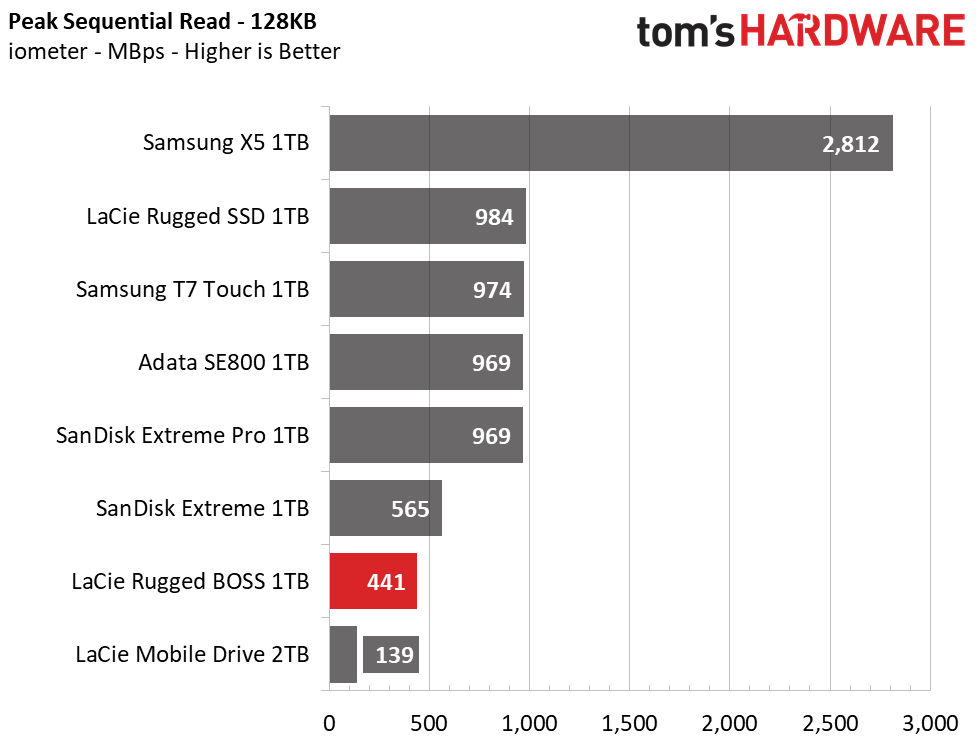

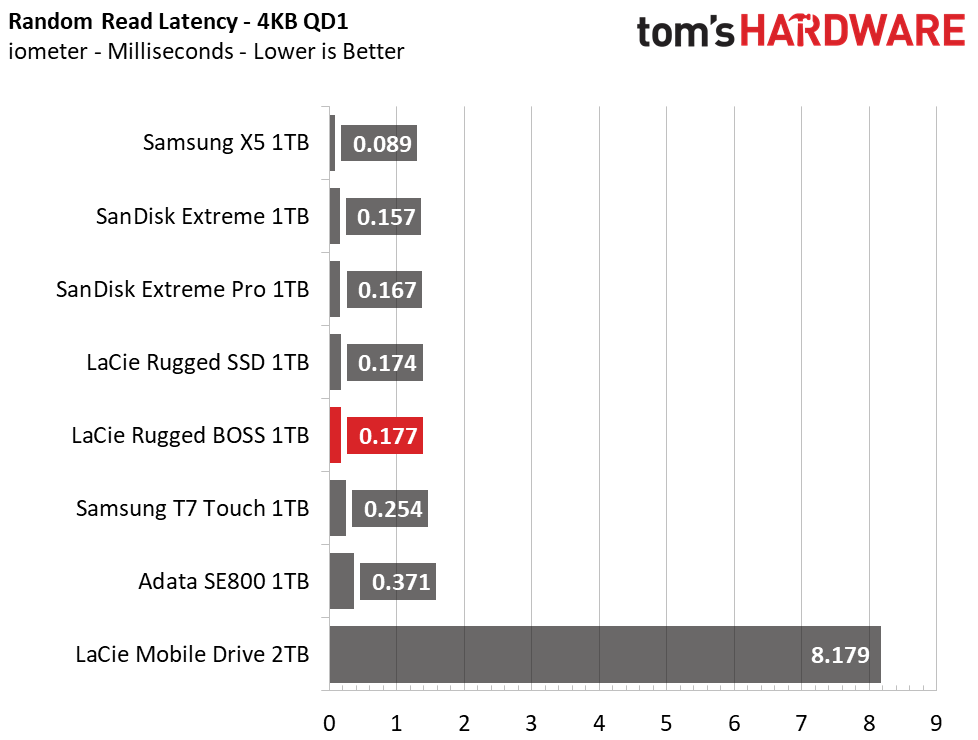

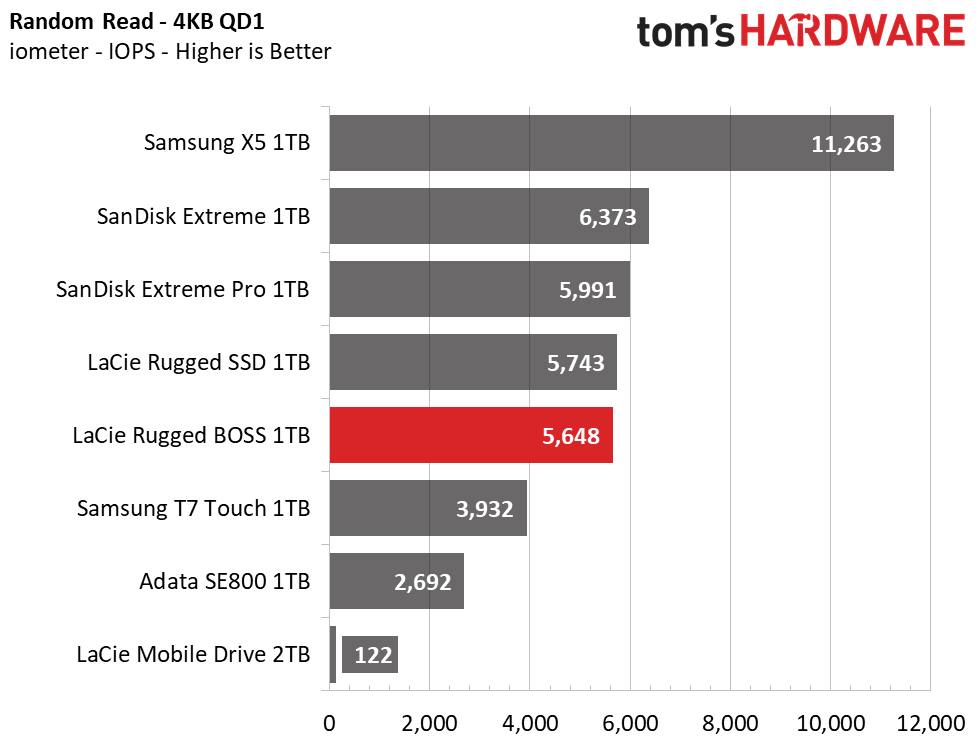
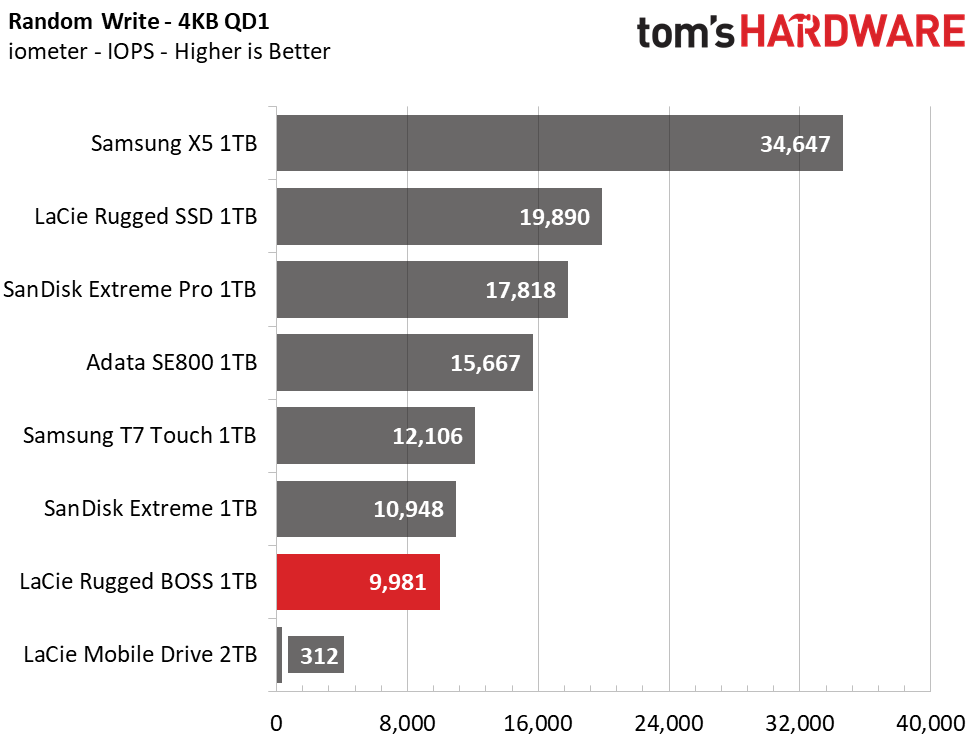
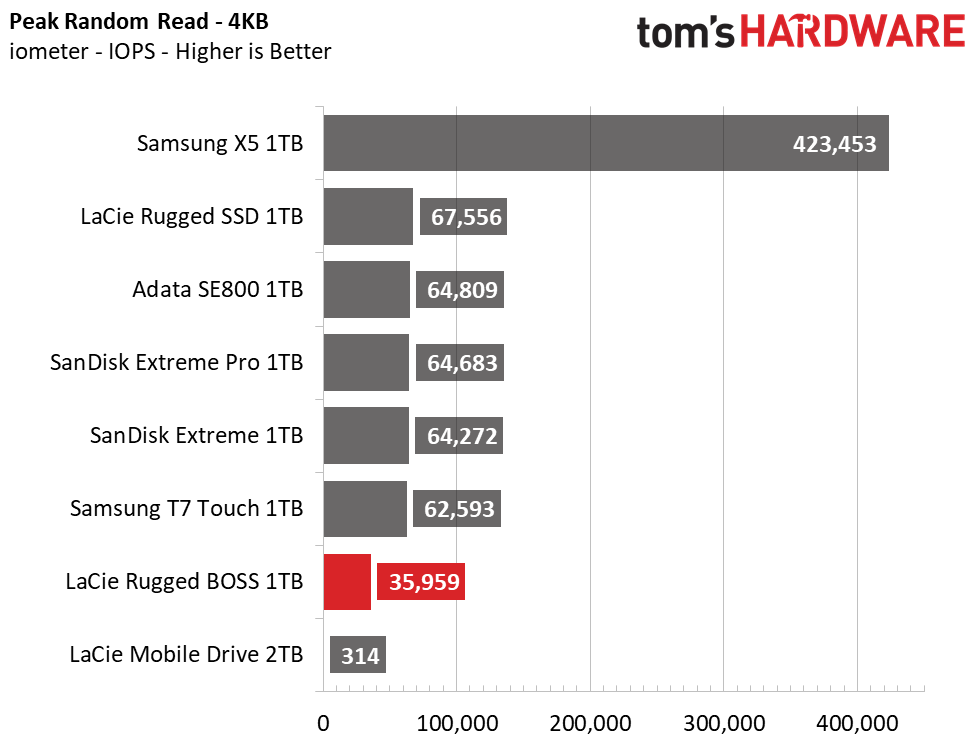
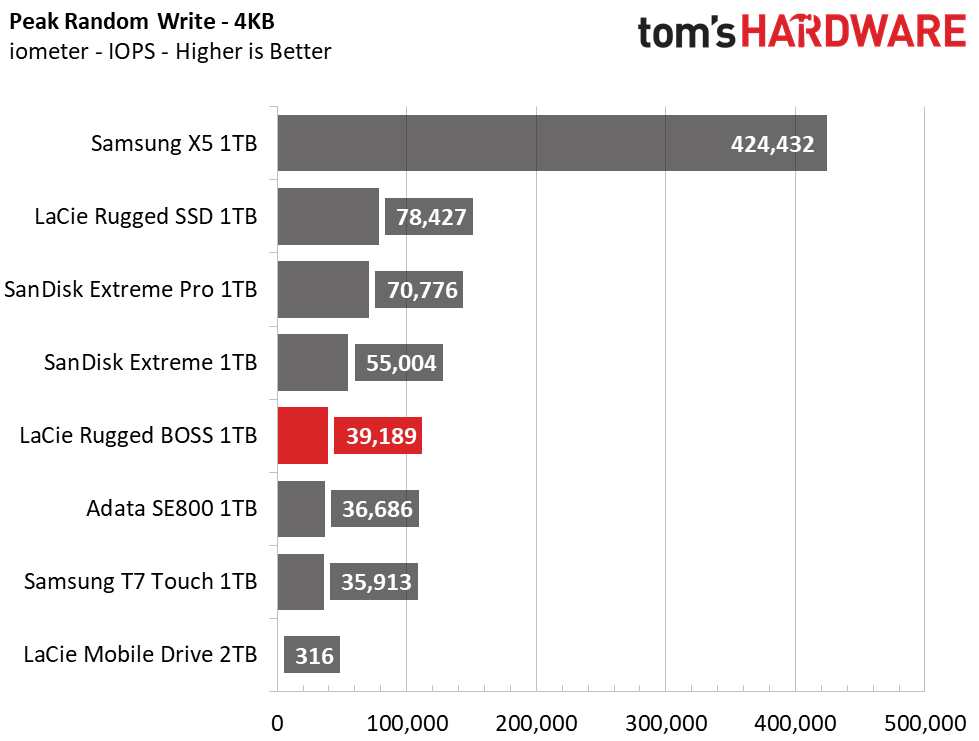
LaCie’s Rugged BOSS SSD dishes out significantly faster performance than the HDD. Read and write speeds are over three times faster and its responsiveness is just as fast as many of the 10 Gbps devices out there at a QD of one. It even surpasses the read performance of the Samsung T7 Touch and Adata SE800 at QD1, because the Rugged BOSS SSD’s internal SSD features a DRAM cache, while these competitors lack DRAM in their architectural design.
Sustained Write Performance, Cache Recovery, and Temperature
Write speed and temperature are two important and inter-related metrics for external devices. We threw in this one last test to measure the performance of the drive over a 15-minute window, writing to the full span of the drive. This test reveals if the drive has a pseudo-SLC cache, which is a small portion of faster-programmed flash that absorbs incoming write workloads. We also monitor cache recovery via multiple idle rounds.
When possible, we also log the temperature of the drive via the S.M.A.R.T. data to see when (or if) thermal throttling kicks in and how it impacts performance. Bear in mind that results will vary based on the workload and ambient air temperature.
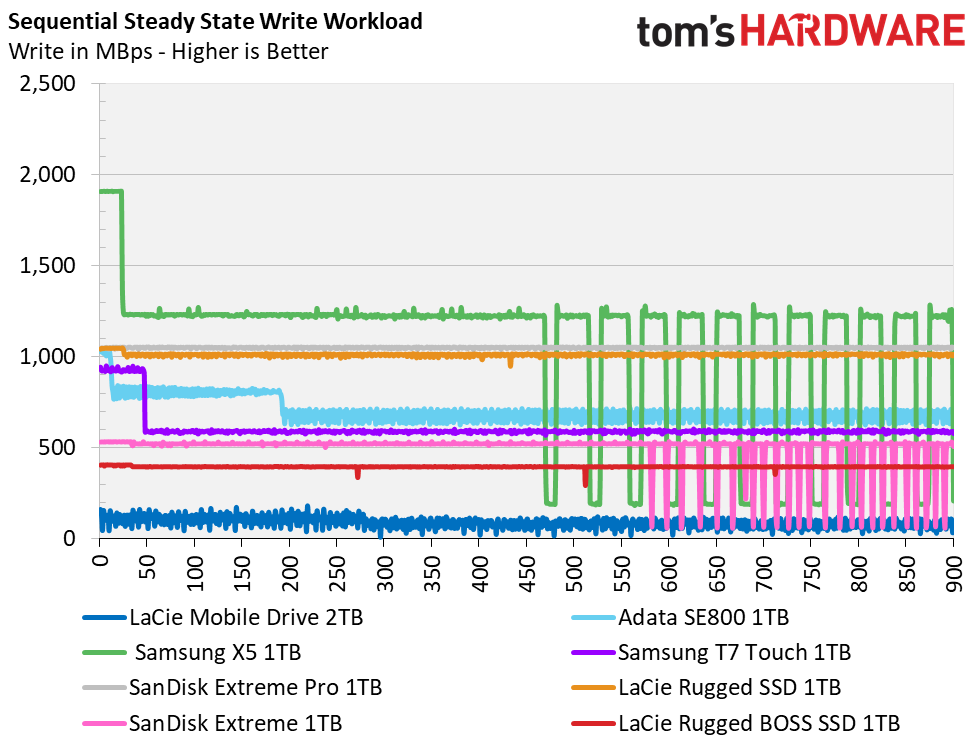

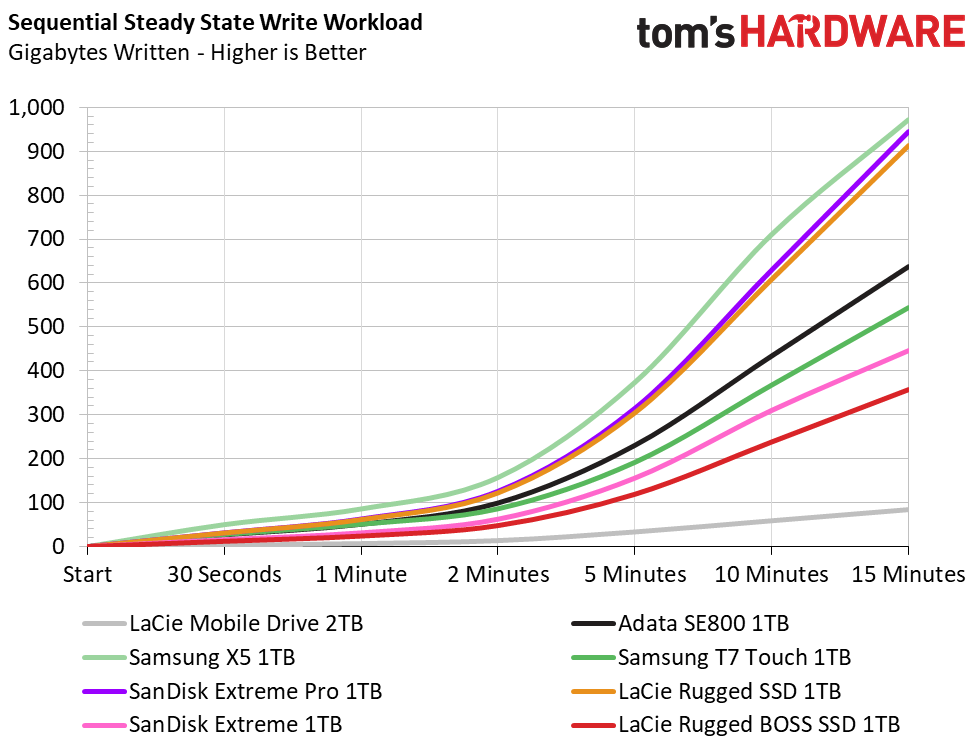

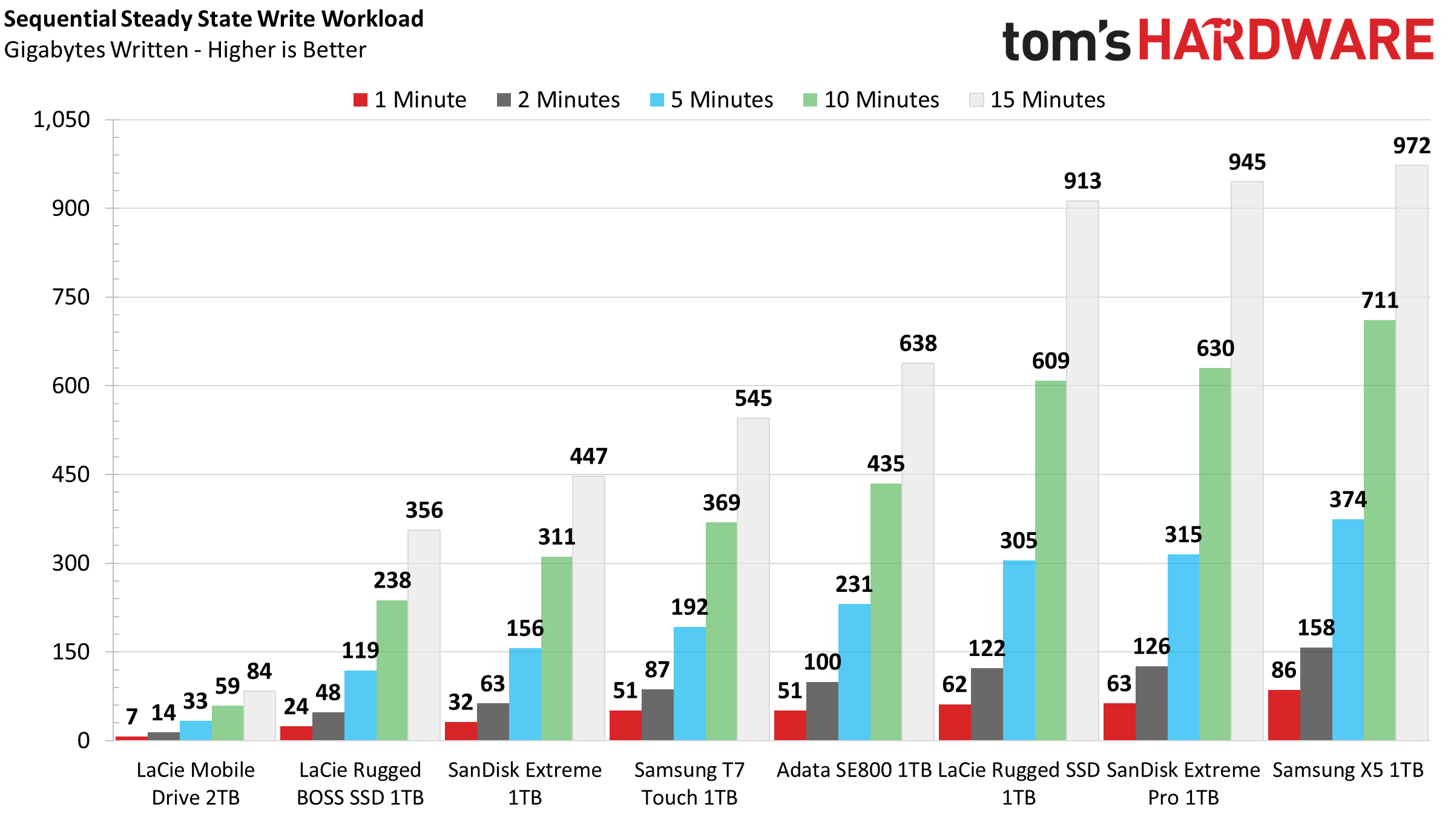
The internal SSD features a small 12GB SLC write cache that averaged a write speed of 405 MBps before it fell slightly to 395 MBps once the cache saturated. With such a beefy enclosure, thermal throttling isn’t an issue. The internal SSD’s S.M.A.R.T. data reported a maximum temperature of 51C after a 600GB transfer to the device.
MORE: Best SSDs
MORE: How We Test HDDs And SSDs
MORE: All SSD Content

Sean is a Contributing Editor at Tom’s Hardware US, covering storage hardware.
-
cryoburner That seems way overpriced for what you get, amounting to what is effectively a $350 enclosure for a $100 SATA SSD.Reply
For that $450, one could get a 2-in-1 or tablet along with another less-expensive SSD or MicroSD cards. Maybe it would be a little more bulky, but it doesn't look like this would be something that would comfortably fit inside a typical pocket either. And with one of those other devices, you are also getting an entire computing device that can be used for previewing, editing or uploading the content you are storing on it.